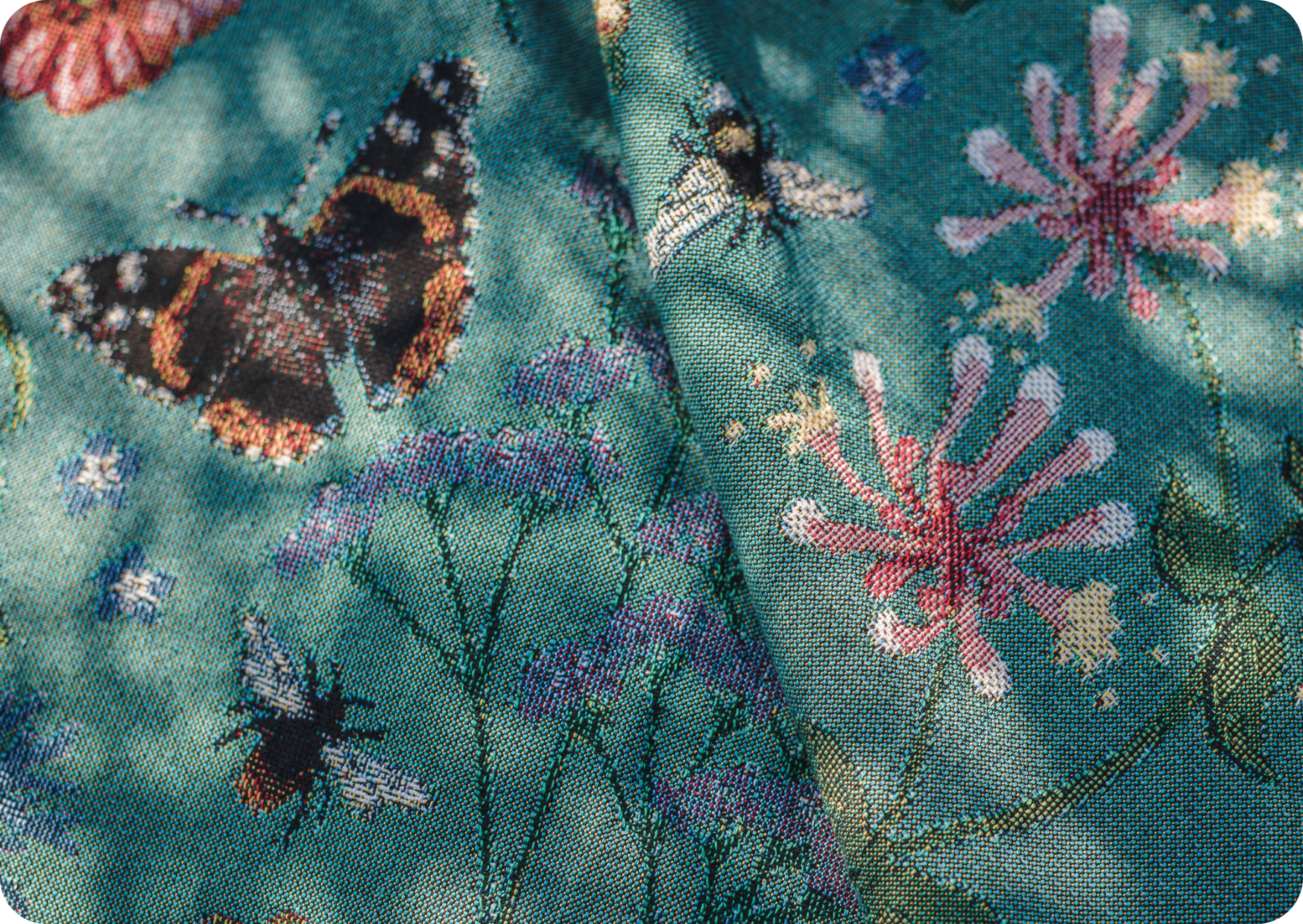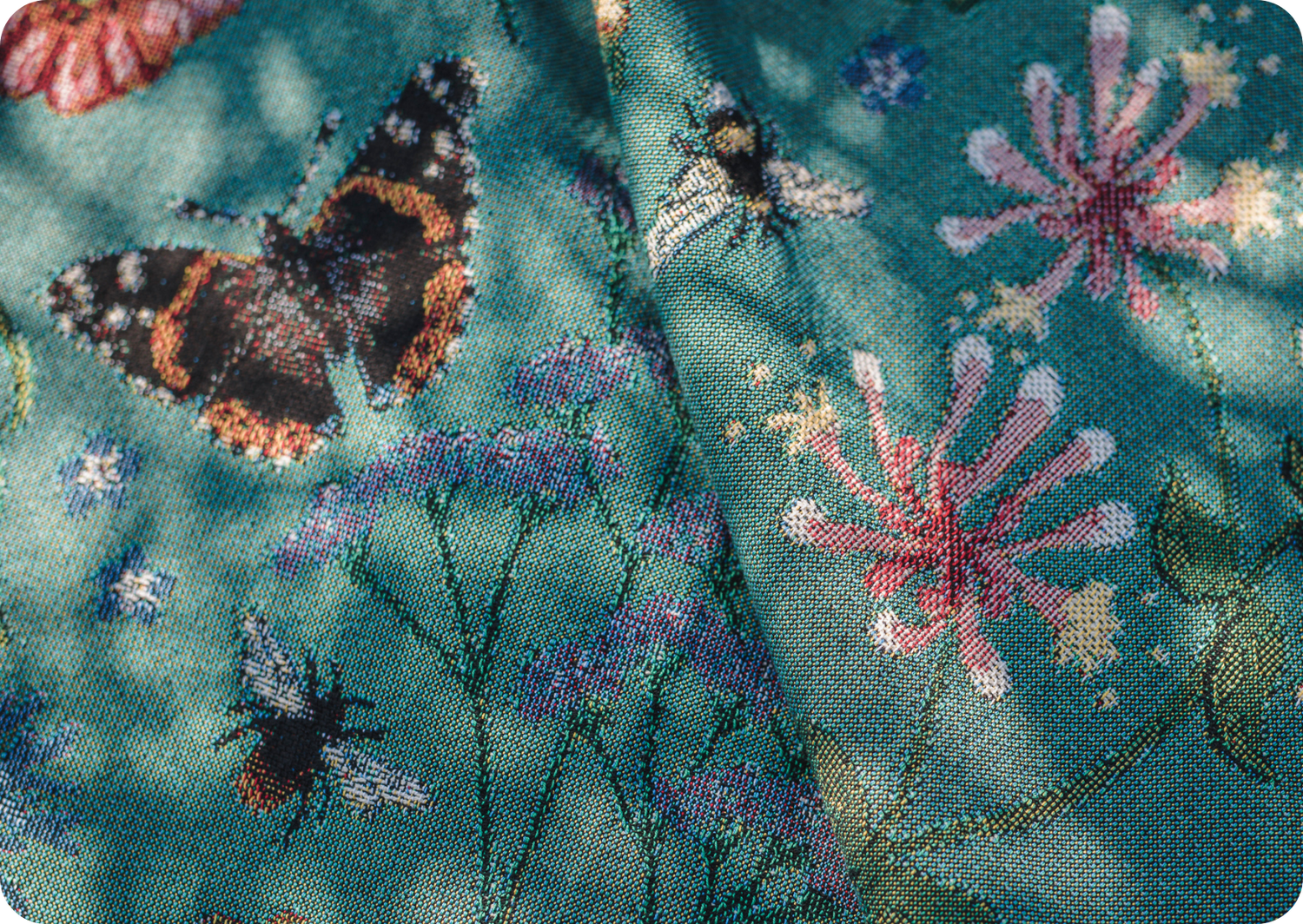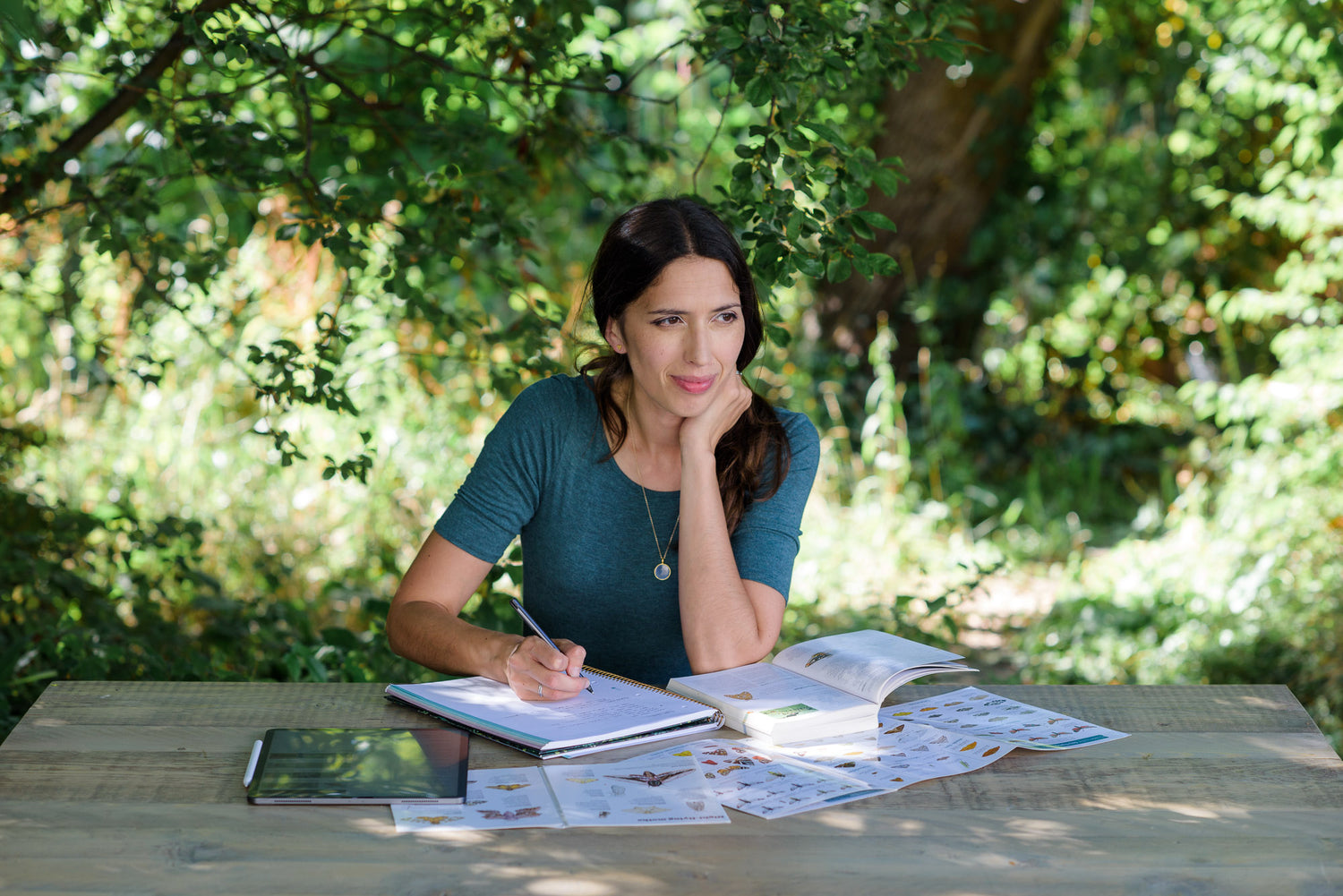In the soft hum of a summer garden, a quiet story unfolds. Petals unfurl, scents linger in the air, and delicate wings catch the light. Look closely, and you’ll see an ancient alliance at work. This is pollination: the hidden engine behind so much of the beauty and abundance in the natural world. Let's explore the inspiration behind our Pollination Collection of homeware.
What is pollination?
Pollination is the process by which flowering plants reproduce, and it’s for many plants it is carried out by insects. As bees, butterflies, hoverflies and beetles move from flower to flower in search of nectar, they transfer pollen between plants. This allows seeds and fruit to form. Some plants rely on the wind to do this, and others can self-pollinate, but many flowering plants depend on animals, with insects being the most common vectors of all.
There are over 1,500 insect species in the UK known to act as pollinators. They play a vital role in both wild ecosystems and human agriculture, supporting everything from wildflowers to orchards. Without them, many of the foods we eat, and the plants we love, would disappear.

Pollination Bloom Jade Woven Blanket
A 130-million-year-old partnership
The relationship between insects and plants is ancient. Fossil evidence shows insect pollinators dating back more than 130 million years, including a tumbling flower beetle preserved in amber from 99 million years ago. Since then, plants and insects have shaped each other’s evolution in extraordinary ways.
This process, called co-evolution, happens when two species live closely together over long periods of time and influence each other’s development. Flowers have evolved colours, shapes and scents that attract specific pollinators. In turn, pollinators have adapted to reach nectar in clever ways, like developing long tongues, sensitive antennae or pollen-collecting hairs.
The result is one of nature’s most elegant exchanges. Food for the insect. Fertility for the flower. And, for us, fruit, seeds, and an ecosystem in balance.

Insects that pollinate in the UK
While bees are often the stars of the show, many different insects are part of this story. Here are some of the key players:
-
Bumblebees and honeybees: Social insects that collect pollen to feed their young. They’re excellent pollinators because they tend to stick to one flower species during a foraging trip.
-
Solitary bees: These work close to home and carry pollen in brushes on their legs or under their abdomen.
-
Hoverflies: Sometimes mistaken for bees, hoverflies are highly efficient pollinators and can fly long distances.
-
Wasps: While less hairy and therefore less efficient than bees, some wasps have developed intricate relationships with specific plants. The fig wasp, for example, has co-evolved with the fig tree over 60 million years.
-
Butterflies and moths: These are important for cross-pollination in wildflower meadows. Moths often pollinate at night and can travel great distances.
-
Beetles: Among the earliest pollinators. Some eat pollen, so flowers adapted for beetle pollination produce extra to ensure some is passed on.

'The Endeavour' Embroidered Bee Patch
Flowers designed for pollinators
Pollination isn’t accidental. Plants have evolved fascinating features to attract and accommodate specific insects.
-
Flat, open flowers (like asters and daisies): Ideal for butterflies and beetles.
-
Clustered blooms (like teasels and scabious): Visited by bees, butterflies and hoverflies.
-
Bell-shaped flowers (like foxgloves and bluebells): Encourage bees to climb inside, dusting themselves with pollen.
-
Tubular flowers (like honeysuckle and some aquilegias): Perfect for long-tongued moths and bumblebees.
-
Lipped flowers (like sage and pea flowers): Bumblebees and solitary bees use the lower lip as a landing pad, then push inside to feed.
-
Buzz-pollinated flowers (like tomatoes and aubergines): Some bumblebees vibrate their muscles to shake pollen loose — a method called buzz pollination.
Every shape, scent and colour is part of a larger strategy to attract just the right visitor.

Pollination Meadow Woven Blanket
Celebrating pollination through design
At Arcana, we believe that art can deepen our connection with nature. Our Pollination collection is inspired by the extraordinary relationship between insects and flowers, a partnership that has made gardens, orchards and wild spaces flourish for millennia.
Each design celebrates the species who keep this ancient process alive. The recycled cotton woven blankets in our collection feature 28 UK insect pollinators including the red admiral butterfly, hummingbird hawk moth, ashy mining bee and rose chafer beetle to name a few.
These heirloom-quality textiles are made with care and meaning, a tribute to the quiet brilliance of nature’s unsung workers.
Explore the full collection

Pollination Rose Woven Blanket & Cushion Cover
How to support pollinators at home
Creating a pollinator-friendly garden is one of the most effective ways to help. Here are some simple ideas:
-
Plant a variety of flowers that bloom from early spring to late autumn.
-
Choose native species that local insects recognise and rely on.
-
Avoid pesticides and chemical treatments.
-
Leave a patch of wild or unmown lawn.
-
Build a bee hotel using hollow stems or bamboo.
-
Plant for winter with hellebores, ivy, gorse or winter honeysuckle.
Even a small pot of lavender on a balcony can make a difference.

Pollination Bloom Woven Blanket
Why pollination matters
Around 84% of EU crops depend on insect pollination. That includes apples, berries, almonds, courgettes, tomatoes and many more. But beyond food, pollinators are essential to the health of wild ecosystems - supporting trees, shrubs and wildflowers, and the countless birds and animals that depend on them.
Yet, pollinators are under threat from habitat loss, climate change, pesticides and disease. Supporting them is not just good gardening. It’s essential for a healthy, resilient planet.
A dance worth preserving
That quiet moment when you notice a butterfly flitting from flower to flower, or hear the buzz of a bee in a border, that moment, it is part of a much bigger story that’s been unfolding for millions of years.
Through thoughtful planting, considered design and awareness, we can help protect this vital process. Let your garden become part of the story, and let your home celebrate the beauty and meaning of the natural world.
Discover the Pollination Collection
🦋 Highlight FAQ
What is pollination and why is it important?
Pollination is the process by which flowering plants reproduce, often with help from insects like bees and butterflies. It is vital for seed and fruit production and supports both ecosystems and food crops.
What UK insects are pollinators?
Over 1,500 insect species in the UK pollinate plants, including bees, butterflies, moths, beetles, hoverflies and wasps.
How can I support pollinators in my garden?
Plant a mix of flowers that bloom across the seasons, avoid pesticides, let some areas grow wild, and create habitats like bee hotels.
What is the Pollination collection by Arcana?
A range of woven heirloom homeware inspired by UK pollinators, featuring detailed designs of butterflies, bees, moths and more. Explore the Pollination Collection.







